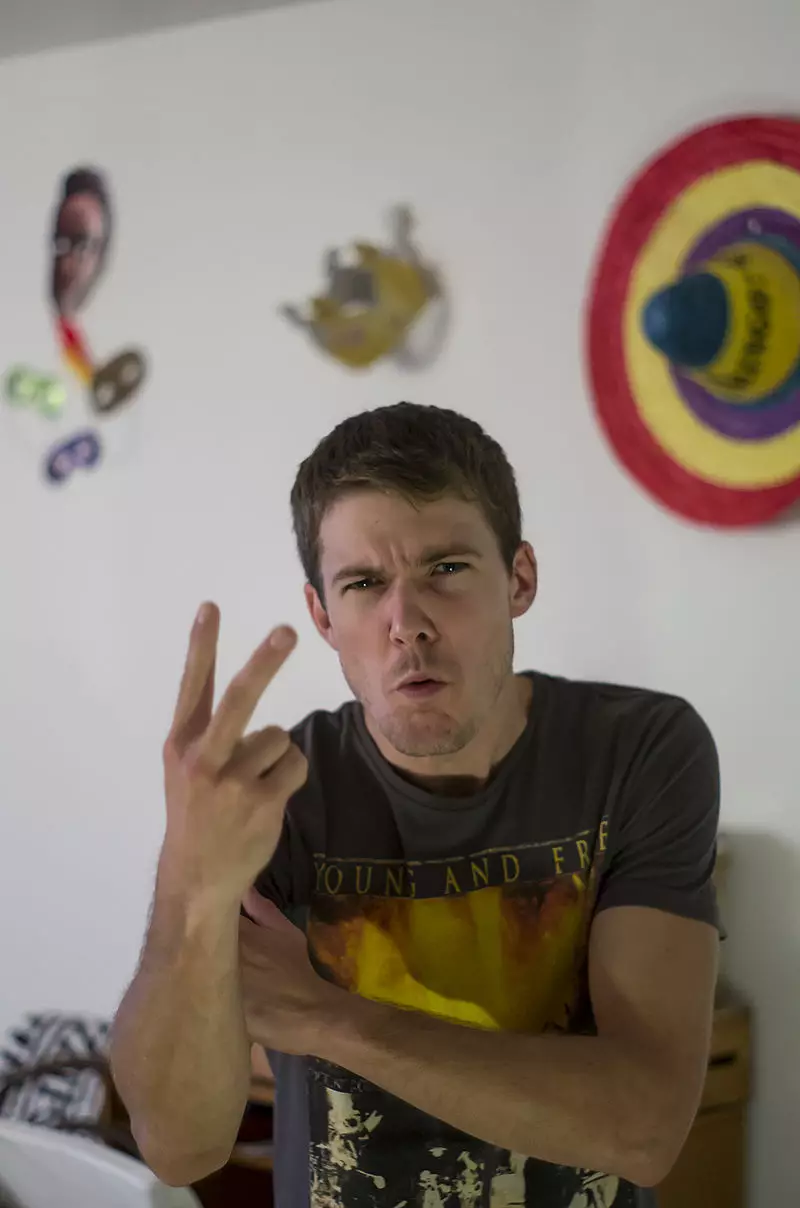
It's a form of greeting, sealing a deal, or congratulations. It can also be a massive source of awkwardness if you go for the shake and the other person goes in for a hug.
But, recently, there has been a lot of focus on a handshake from one person in particular: US President Donald Trump.
His shake has been watched and studied so much that GQ released an article titled How to Shake Donald Trump's Hand: A Case Study.
The author, Jay Willis, says: "The 'demoralized' president's jerky, uneven motion and clammy grasp - I have no evidence for this, but it seems like it's probably clammy - are exacerbated by his occasional attempts to pull his victim counterpart in toward his person, a deeply unsettling habit that vaguely brings to mind an unskilled fisherman exerting great effort to reel in a catch."
My dad always taught me that a firm, solid shake was a good show of character. But in Middle Eastern and Asian countries, that can be considered rude, and a weak shake is preferred.
But where did the handshake originate from?
In 1987, Stephen Potter entered the Guinness Book of World Records for the most amount of handshakes (19,550) in a single day. The longest handshake record is shared by two pairs, Alastair Galpin and Don Purdon from New Zealand, and Nepalese brothers Rohit and Santosh Timilsina for 33 hours and three minutes.
There are archaeological ruins and texts which show people shaking hands as far back as the fifth century BC, but there's no official reason for how it came about.
However, the most widely accepted theory is that it was to signal to the other person that they weren't carrying any weapons when meeting.
But we're done with questioning humanity and why we do the things we do. We wanted to know more. We HAD to know more.
Where did the classic V sign insult come from?
While one way says peace, the other way screams 'fuck you' in the UK, Australia, Ireland, Canada and South Africa.
According to History Extra, the act
dates all the way back to the 15
th century during the Battle of
Agincourt. The popular theory was that the French would chop the index and
middle fingers off archers to prevent them from shooting arrows. But those
who still had their fingers would show them off to their enemy to ridicule
them. However, there is doubt surrounding that belief, as it usually took three fingers to pull bows from that era.

Credit: Rick and Mortles
It's clear that people of any age can use it, as seen in 2011 when 89-year-old Baroness Trumpington gave ex-cabinet minister Tom King the sign when he suggested that survivors of World War Two were starting to look 'pretty old'.
What about yawning
and why is it so contagious?
We've all been there when we're trying to bash out an essay the night before it's due and cannot stop yawning. I bet you've yawned at least once or twice since reading the word.
But is yawning just associated with tiredness or sleepiness? Well, despite us being able to put rovers on Mars and explore the depths of the Mariana Trench, researchers are still perplexed about the good, old yawn.
We know that there are about 20 psychological reasons for yawning, with the most common being tiredness, boredom and stress. One study claims that a yawn is your body's way of rapidly decreasing carbon dioxide and increasing oxygen. Getting that rush of oxygen into our bloodstream helps wake us up.
It's also theorised as being associated to our ancestral pack mentality. University at Albany psychology professor Gordon Gallup told ABC's Good Morning America: "During human evolutionary history, when we were subject to attacks by a group, then the ability to detect danger would have had a critical relationship to your ability to respond to it on a moment-to-moment basis. If everyone yawns in response to seeing someone yawn, it reinstates an optimal level of vigilance on the part of people in the group."
Another theory is that it helps with your body being able to regulate its temperature. An experiment found that people with cool packs on their heads were less likely to be victims of contagious yawning.
A good, hearty yawn is contagious in about 60-70 percent of people, according to the Smithsonian. People who are more empathetic have been shown to be more likely to yawn if someone else does.
Why do we kiss?
It's one of the most routine things that people across the relationship spectrum do. It can make or break a first date, it can be the ultimate climax of a movie (think The Notebook), there are many ways to do it and it can sometimes land you in jail.
There are plenty of health benefits to kissing. It's been shown to reduce stress and cholesterol levels, as well as an adrenaline rush, which has a beneficial impact on your cardiovascular system. It requires 34 facial muscles and 112 postural muscles.
But who came up with the idea to lock lips with someone?
As we've seen with the above entries, there several theories about the origins of kissing, but no concrete answer. There are Sanskrit scriptures showing the act of kissing in Hinduism, Buddhism and Jainism about 3,500 years ago. It's believed that kissing originated from India and the act spread into Europe after Alexander the Great conquered parts of Punjab in 326 BC.
One school of thought believes that humans and animals do it because it's instinctual; that's there's something about the lips that just makes sense. But another theory is that it comes from grooming behaviour or what's called kiss feeding, where a mother will regurgitate their food to their babies. That behaviour is also seen in the animal kingdom between males and females during courtship, and therefore humans could have learned to kiss through imitation.
Featured Image Credit: PA